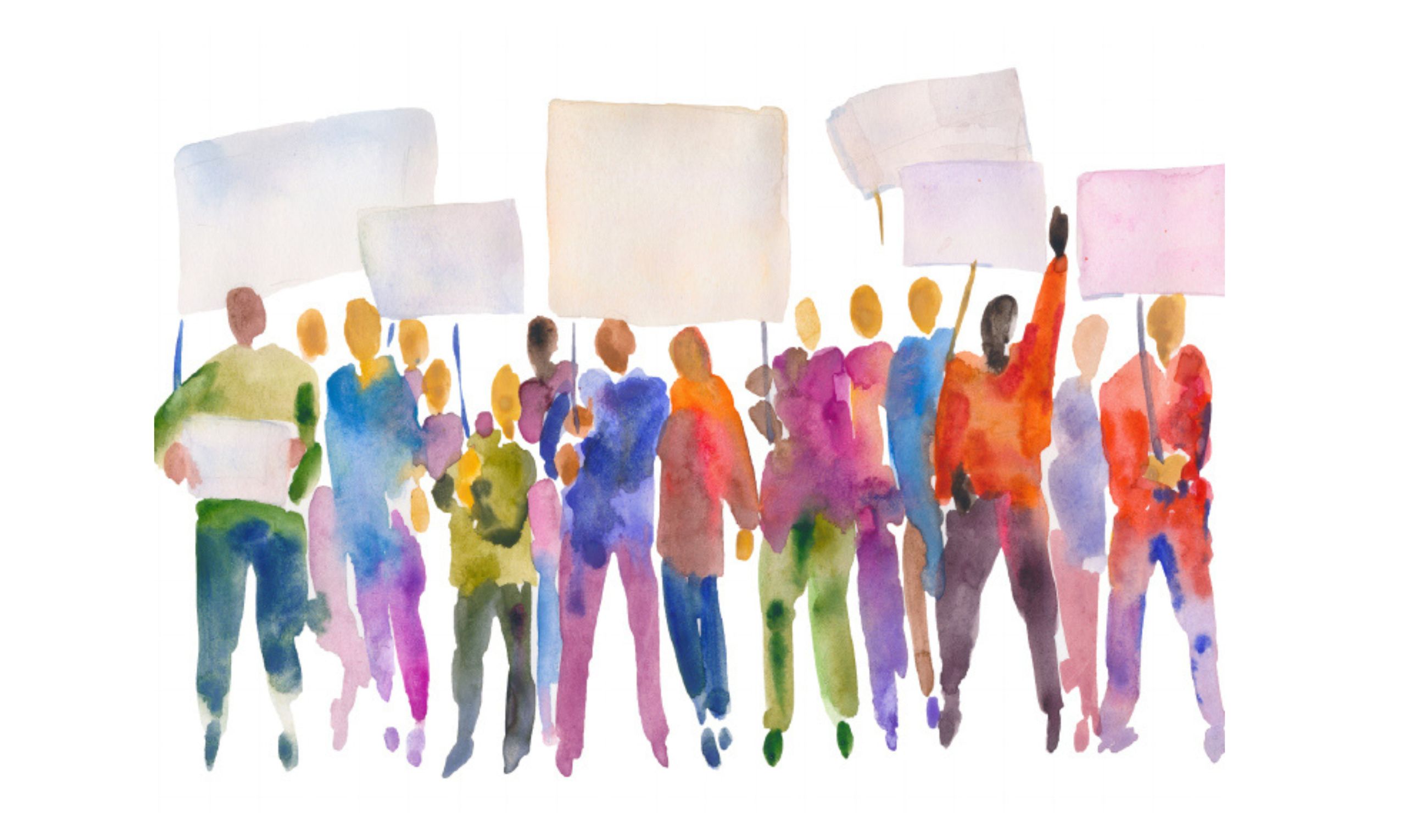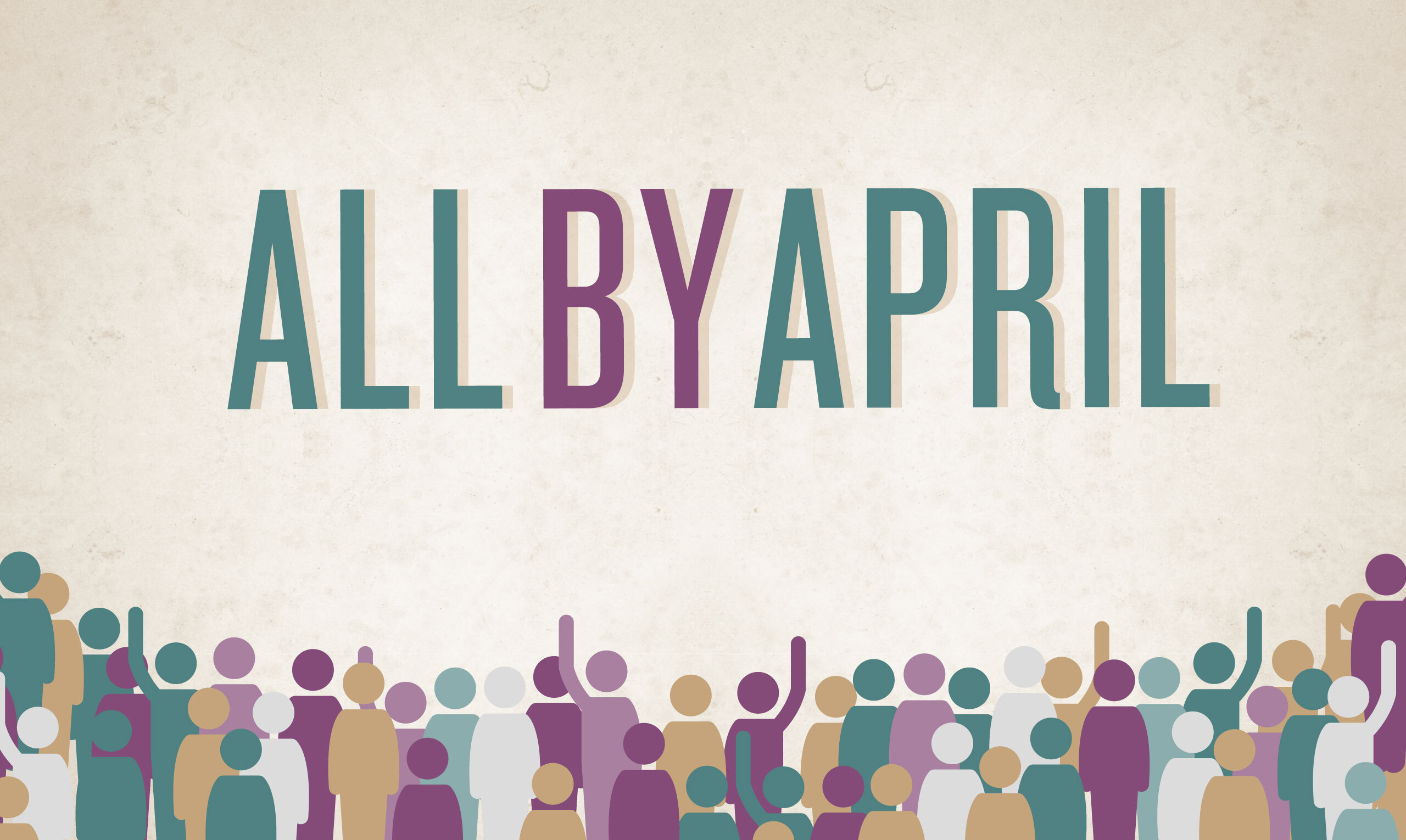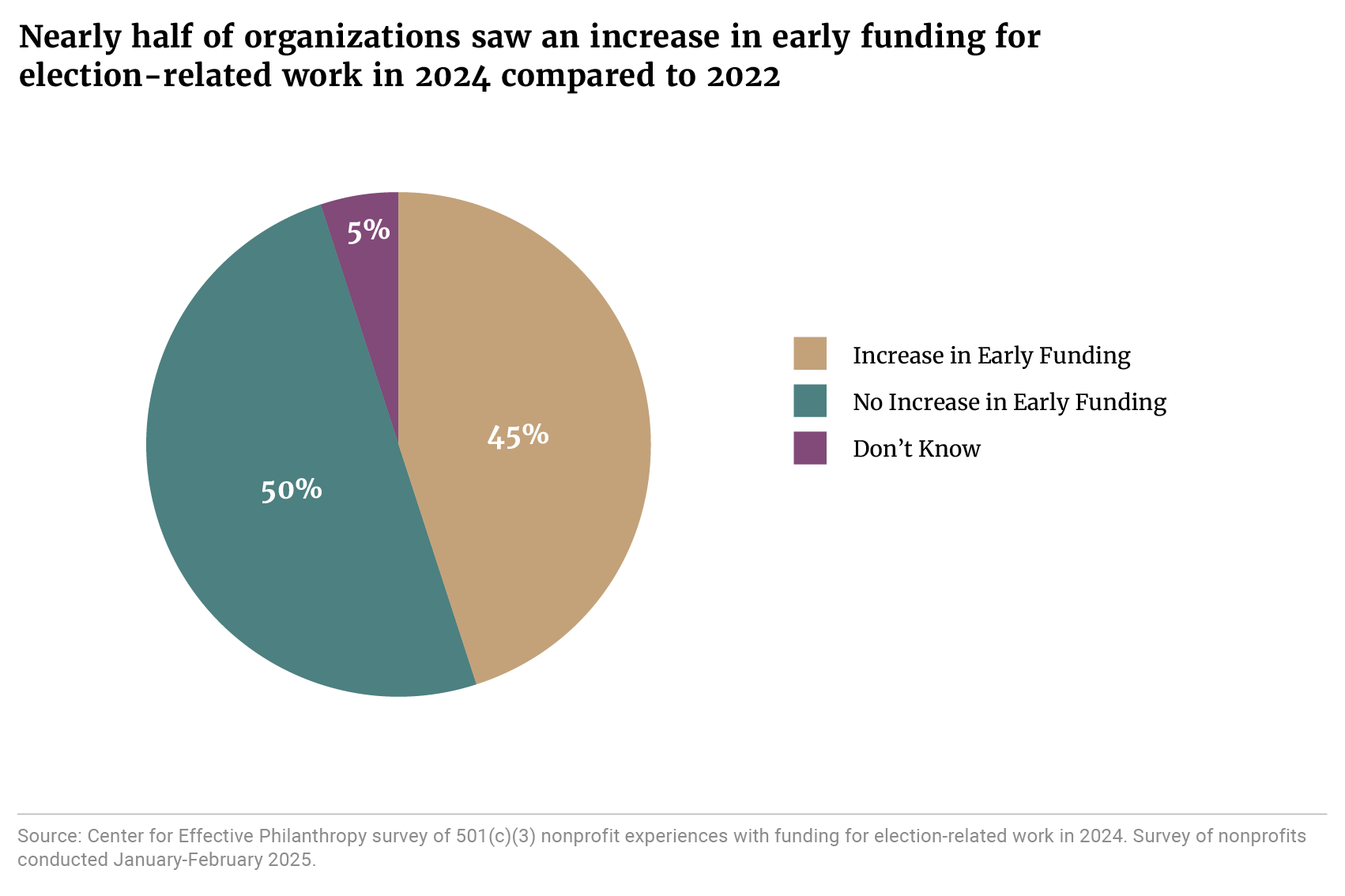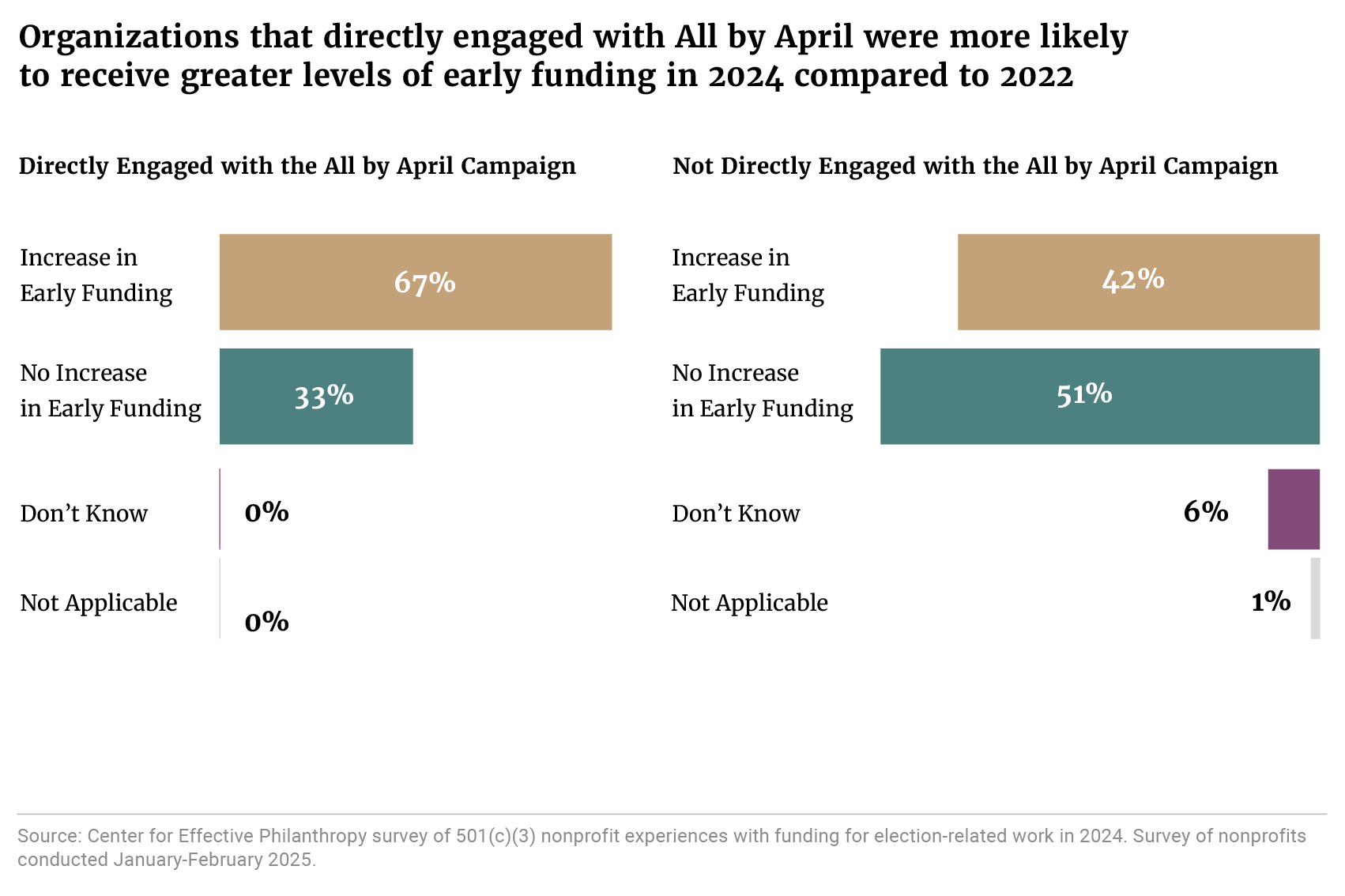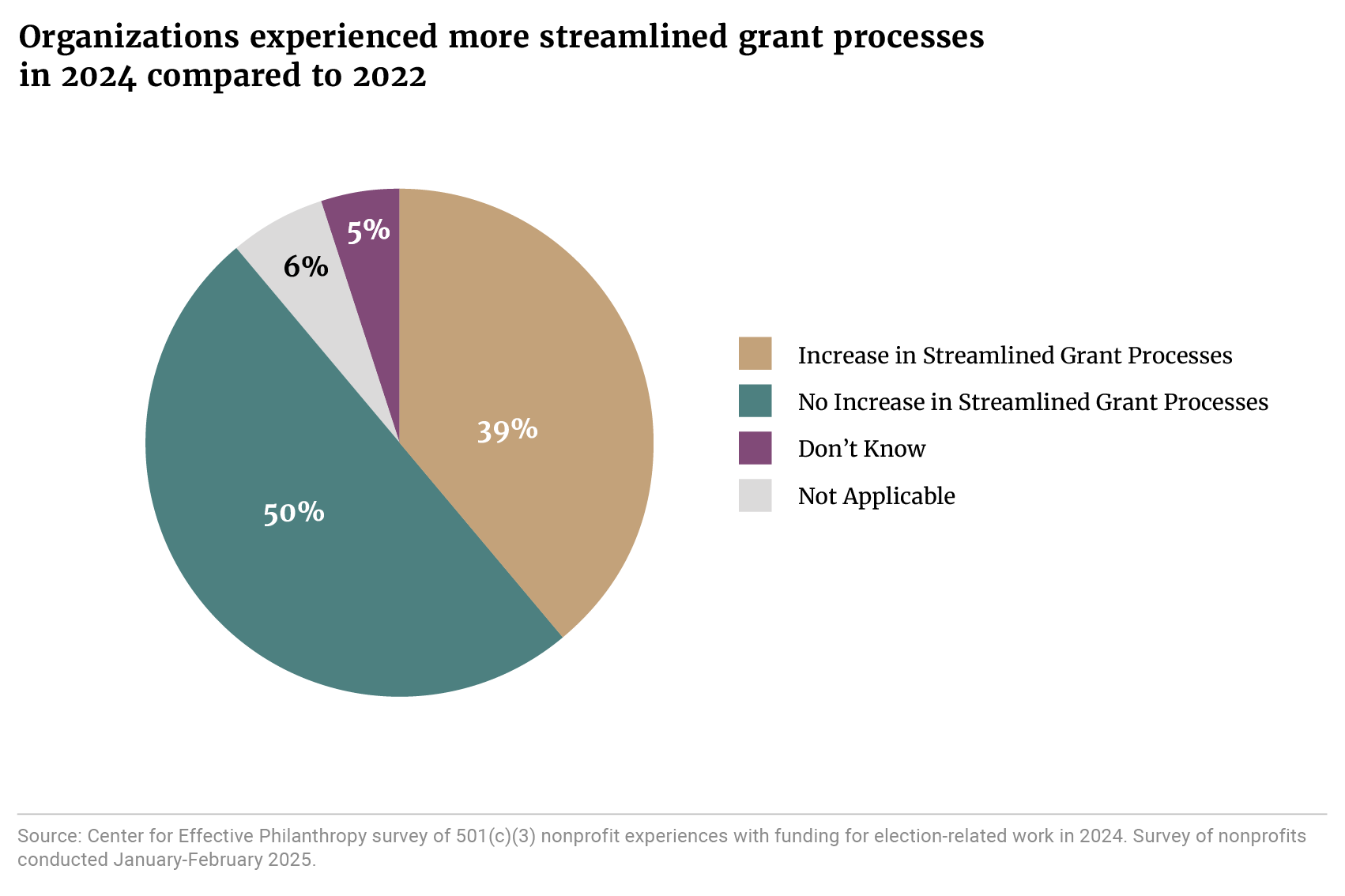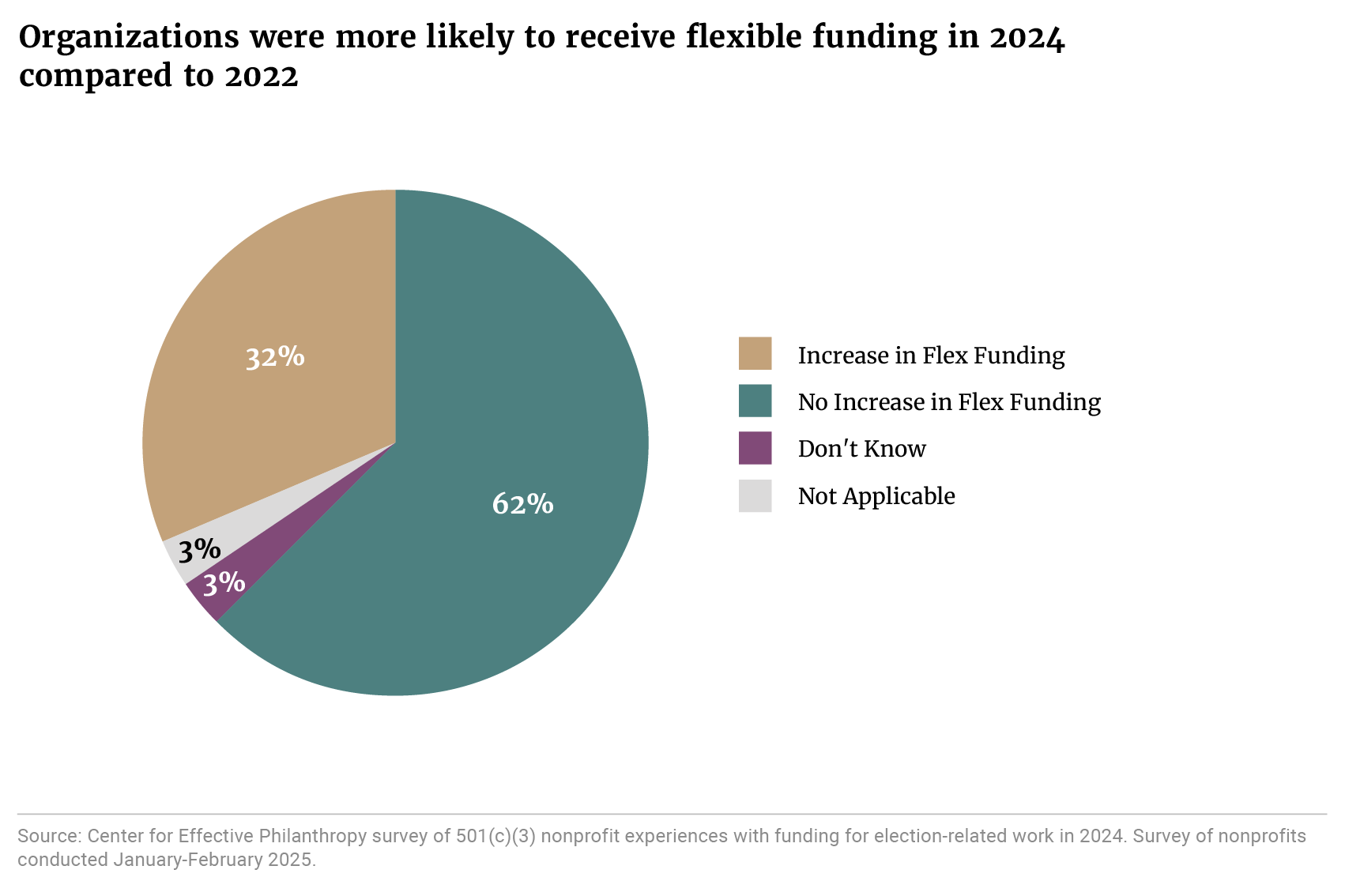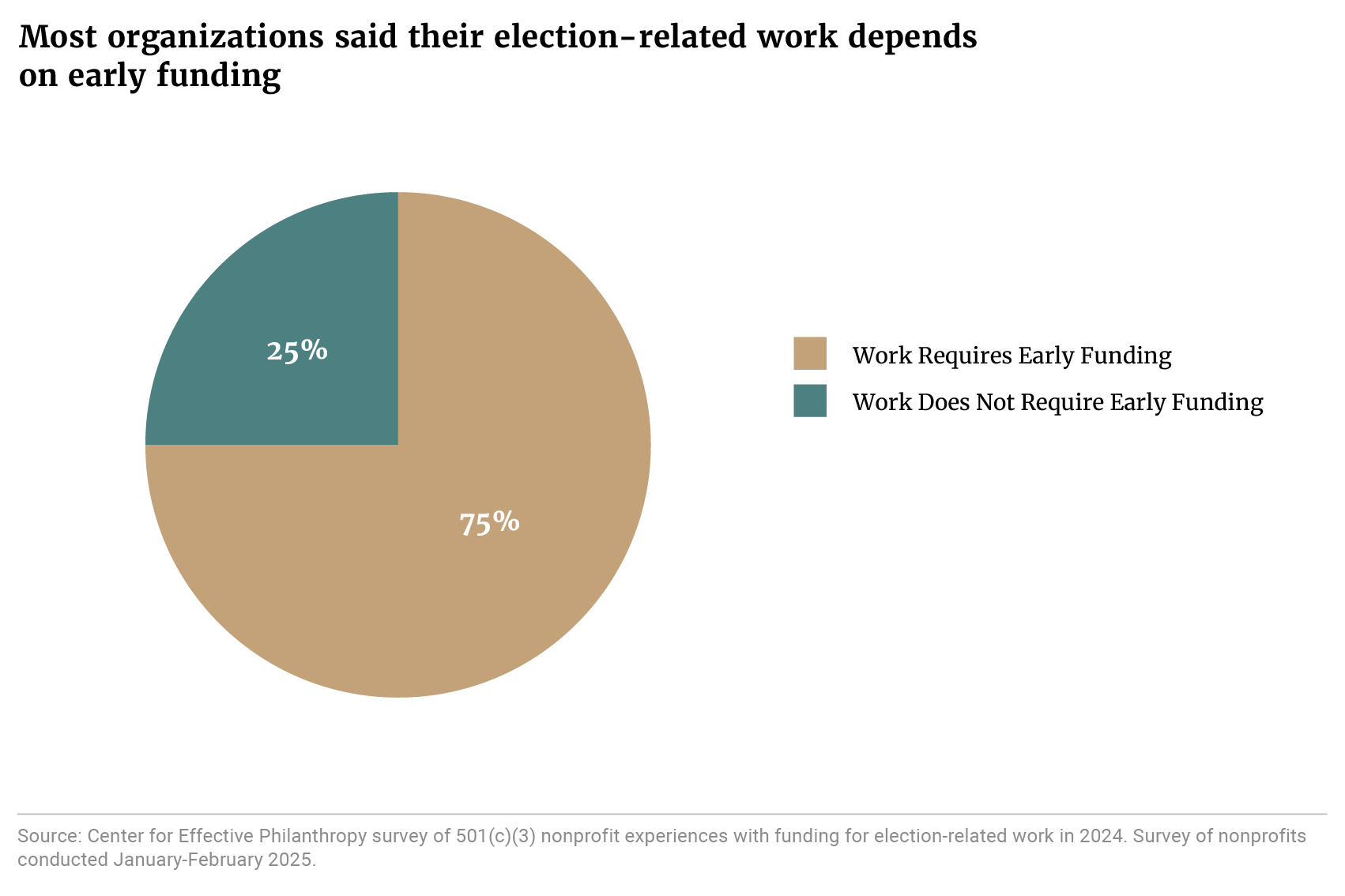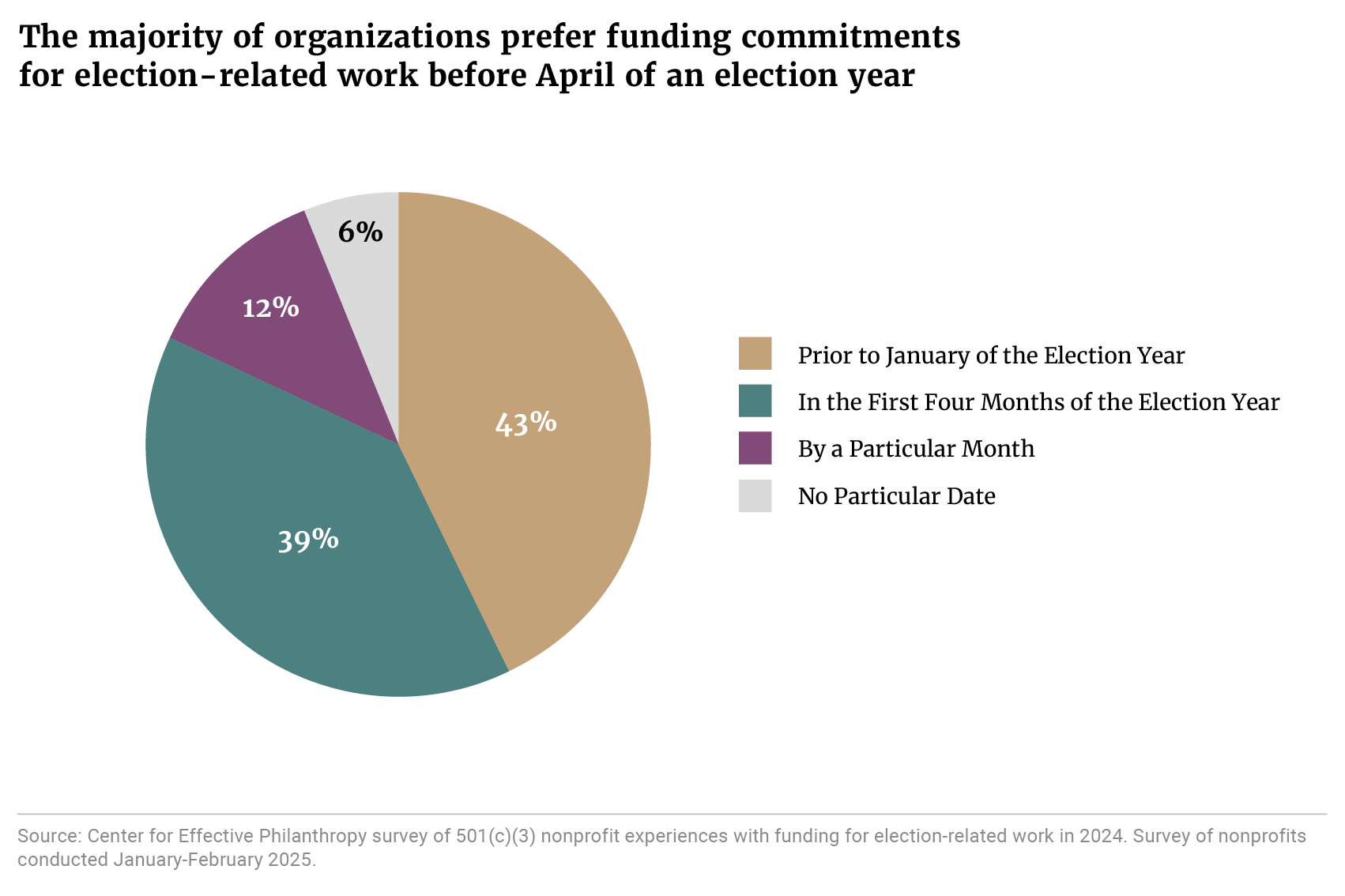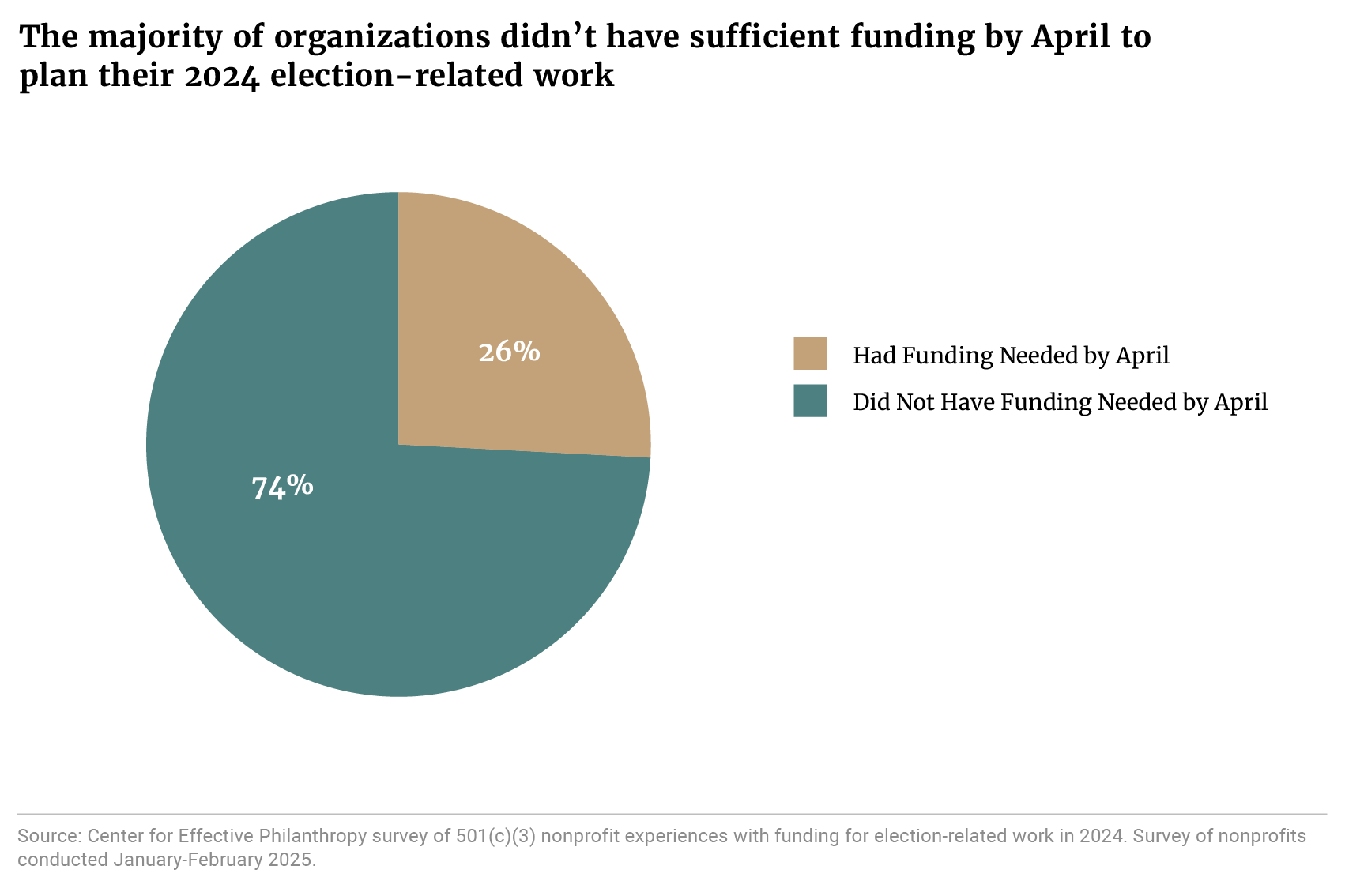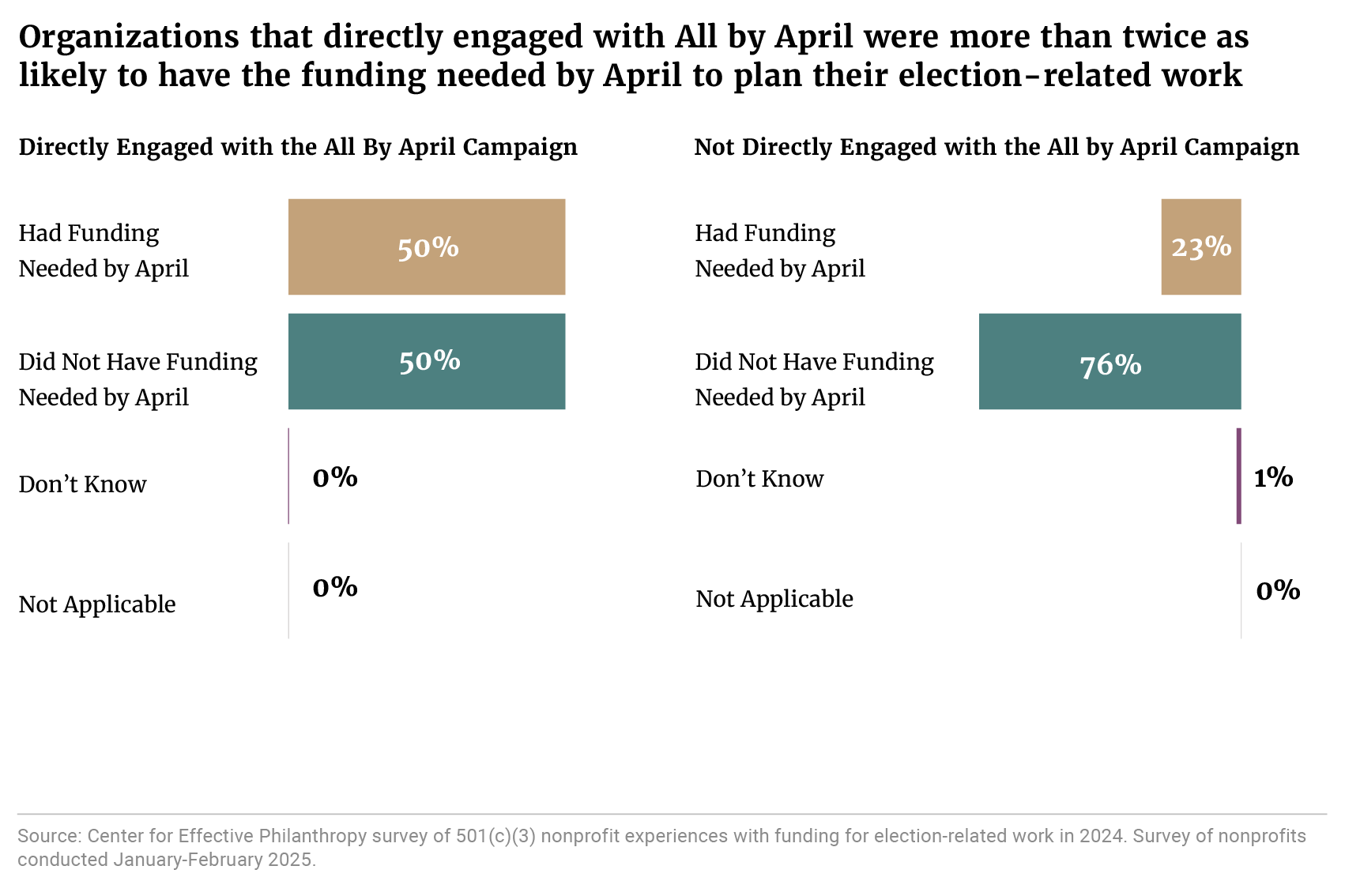Trust is one of our core values at Democracy Fund. It is the foundation for how we work with our peers and partners. Earning and maintaining trust requires transparency, which can feel especially hard in times of change.
That’s why earlier this month, I wrote about how Democracy Fund is adjusting our strategy and operations, which will allow us to maximize the resources we put into the pro-democracy field, while increasing our ability to remain nimble and responsive to the future.
Today I want to share some additional information about our evolution. Over the next few months, Democracy Fund will continue to advance our new organizational and program strategy, aiming to complete the process by January 2026. Shining a light on why we make decisions is vital to the relationships we maintain with our grantees, partners, and team. And while we are still working to finalize our new strategy, we’re committed to keeping our network informed about how and why things are changing.
This is what we know for sure: Democracy Fund must give with greater urgency and ensure that a larger proportion of our resources are reaching the pro-democracy field. The mounting attacks on our democratic system and public institutions (as flawed as they may be), and on communities like immigrants, journalists, LGBTQIA+ people, public servants, and so many others, could cause significant damage for generations — but there is still a window to change course by bolstering organizations doing the essential work that our nation needs today and required to build the future.
To meet this moment, we are shifting Democracy Fund’s programs and team structure. These changes will allow us to move with purpose and contribute to a safe, free, and secure future for all Americans.
The Focus of Our Renewed Programs
Democracy Fund’s work for the past several years has been organized around three core strategies, which have been further operationalized into four programs that manage 11 initiatives, each comprising multiple workstreams. Moving forward, we’re realigning our programs with our three strategies, each of which will be streamlined to have significantly fewer separate lines of work.
These new, interdependent programs are designed to build on our past and support new efforts that will be most effective in strengthening the power of pro-democracy movements and leaders to reverse democratic backsliding and creating a democracy that delivers for those it has left behind.
- We believe that powerful, community-led movements are a core feature of democratic life. Our first program seeks to build and expand the power of movements, organizations, and leaders — grounded in a commitment to democracy and justice — that can marshal the people-power necessary for a robust, pro-democratic civil society to thrive.
- The attacks on our democracy are happening at a rapid pace, and to respond quickly, we must strengthen and deploy existing democratic guardrails and support the leaders and watchdogs all around us who are stepping up to keep threats at bay and build capacity to push back against them. This second program will defend and protect democratic institutions and vulnerable communities from attack and support the networks and narratives to counter, and create resilience to, democratic backsliding.
- Our existing democracy is flawed and damaged, and our government’s systemic failures and inability to deliver for all Americans has been a significant driver of the current crisis. We can’t just rebuild; we must construct a better democracy. This program will catalyze and advance transformative ideas, practices, systems and infrastructure in civil society, government, and media capable of making the democracy we seek a reality for all.
Critically, there are a number of threads that will connect these programs – news and information, elections, immigration, and more – that will run throughout our programs in different ways. In the coming months, we will be sharing more about these shifts via conversations with our grantees as we finalize the strategy.
Ready to Move More Dollars Out the Door
Since our founding in 2014, Democracy Fund and our partner organization, Democracy Fund Voice, have approved more than $500 million in grants to organizations working to strengthen our nation’s democracy. We are deeply proud of these contributions to the remarkable, courageous work we have been able to support across the field. But still, we know that needs across the field have increased. As a result, our grantmaking must increase, too.
To ensure we are moving as much money into the field as possible, we recognized the need to make hard decisions, including reducing the size of our staff. These reductions are not being made lightly. Every person who has been on our team has contributed meaningfully to our mission. But, we must make careful choices about how we allocate our resources – choices that, in this moment, mean spending less on operations and more on grants to the field. These are extraordinary times, and they call all of us to confront and make very difficult decisions.
Where We Go from Here
Through this change, I can assure you that Democracy Fund will stay bold, courageous, and focused on impact. The vision of an inclusive, multiracial democracy that ensures freedom, dignity, justice, and well-being for all Americans is as important – and fragile – as ever.
As Democracy Fund advances and finalizes our new organizational and program strategy, we remain focused on our current and future grantmaking, rapid response investments, and ongoing commitment to funder engagement.
Thank you for putting your trust in Democracy Fund and supporting our efforts to respond to the most pressing challenges of our time.
